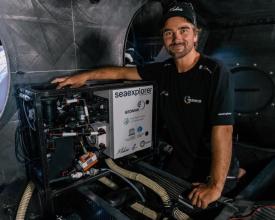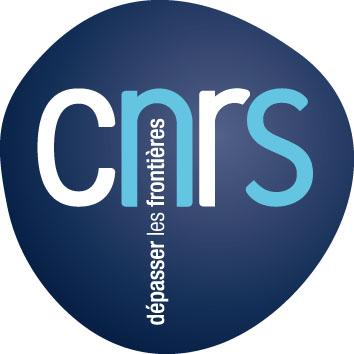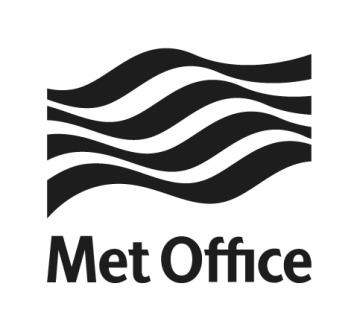
The Ocean Race : réunir la voile et la science pour améliorer la santé des océans.

L'Ocean Race est l'ultime défi océanique - une course à la voile autour du monde à travers certaines des eaux les plus reculées de la planète. Les origines du programme scientifique de l'événement remontent à 2001, lorsque des capteurs embarqués ont recueilli des données sur les eaux de surface. En 2015, les équipes ont déployé pour la première fois des bouées dérivantes.
L'un des principaux objectifs de la course, outre l'excellence sportive, est de faire progresser les connaissances et de recueillir des données sur la santé des océans. Cet objectif est particulièrement important pour les scientifiques, car les équipes recueillent des informations dans des zones de l'océan auxquelles les navires de recherche ont rarement accès, ce qui permet de combler des lacunes importantes en matière de connaissances. Les domaines d'intervention de la course 2022-23 comprennent la mesure des données météorologiques, des paramètres océaniques essentiels et de la pollution microplastique, ainsi que le déploiement de bouées dérivantes de surface et de flotteurs Argo, la protection de la mégafaune marine et la recherche sur la biodiversité des océans. Les données collectées sont ouvertes et partagées avec les partenaires scientifiques de la course, et alimentent des rapports qui informent et influencent la politique et les objectifs en matière de climat.
Contexte
Défis à relever
L'Ocean Race recueille des données sur deux des principales menaces qui pèsent sur les océans : le changement climatique et la pollution microplastique. L'échantillonnage à bord, les données météorologiques et les données des bouées dérivantes contribuent à des prévisions plus précises sur le temps, le climat et la santé des océans.
Le manque de mesures directes des variables environnementales et océanographiques dans les zones où les données sont rares affecte la fiabilité des prévisions et des simulations de modélisation. Les bateaux de course, également connus sous le nom de "navires d'opportunité", facilitent cette mesure directe des conditions océaniques au-delà des routes de recherche et de navigation habituelles, contribuant ainsi à combler les lacunes critiques en matière de connaissances et à faire progresser notre compréhension de l'océan et du changement climatique.
Les initiatives de collecte de données de la Course à l'Océan permettent également de combler le manque relatif de connaissances sur l'étendue et la nature de la pollution microplastique dans l'océan. Les données collectées par les bateaux représentent d'importantes données de référence et la course facilite également l'essai de systèmes d'échantillonnage scientifiques résistants qui peuvent être transportés et déployés sur les bateaux.
Emplacement
Traiter
Résumé du processus
L'organisation d'une course autour du monde est une prémisse à la navigation dans certains des coins les plus reculés de la planète. Comprendre que cela peut bénéficier à la communauté scientifique en fournissant à la fois un moyen d'accéder aux océans et un véhicule pour déployer des instruments de mesure, permet la collaboration et la création de partenariats entre les parties prenantes de la course et la communauté scientifique. Exiger des équipes et des athlètes qu'ils soutiennent et participent à la recherche scientifique par le biais de la charte de durabilité et du code de conduite des équipes de l'Ocean Race, c'est s'assurer que cette collaboration fait partie intégrante de l'Ocean Race.
Si les bateaux permettent de tester de nouvelles technologies et techniques d'échantillonnage, la collaboration avec les partenaires scientifiques apporte la technologie et le savoir-faire nécessaires à la collecte et à l'analyse des données pertinentes. Sans les connaissances et l'expertise fournies par les partenaires scientifiques, et sans leur capacité à évaluer les résultats et à en rendre compte, il ne serait pas possible de collecter des données significatives, ni de partager et de diffuser les résultats auprès des publics concernés et des parties prenantes. Le partenariat avec des institutions scientifiques garantit une collecte de données de qualité et la crédibilité nécessaire pour informer la recherche et la politique.
Blocs de construction
Un hippodrome unique qui permet d'accéder à des zones géographiquement extrêmes et pauvres en données sur l'ensemble des océans de la planète.
Le principe sous-jacent de The Ocean Race - courir pour faire le tour du monde - signifie que la course emmène naturellement les concurrents dans certaines des régions les plus reculées du monde. Cela en fait une plateforme unique pour la recherche scientifique, car elle permet aux scientifiques d'accéder à des zones reculées, telles que l'océan Austral autour de l'Antarctique, qui seraient rarement accessibles autrement. Les navires qui naviguent en dehors des routes maritimes régulières jouent un rôle essentiel dans la capacité à déployer des instruments scientifiques, tels que les bouées dérivantes et les flotteurs Argo qui sont déployés pendant la course, dans des endroits sous-échantillonnés. Cela offre des opportunités rares de collecter des données dans des parties de la planète où peu d'informations ont été enregistrées, faisant de la course une plateforme cruciale pour collecter des données autrement inaccessibles et pour combler les lacunes en matière de données, contribuant ainsi à faire progresser notre compréhension de nos océans.
Facteurs favorables
- Le principe de base de The Ocean Race - faire le tour du monde le plus rapidement possible - signifie que la course amènera invariablement les bateaux dans des zones peu fréquentées.
- La conception de l'itinéraire de la course (étapes, escales, etc.) déterminera la destination des bateaux.
- Les bateaux de course à voile permettent d'accéder à certaines des mers les plus reculées de la planète, ainsi qu'à des zones situées en dehors des routes de navigation et de recherche habituelles.
Leçon apprise
L'itinéraire de la course, avec des escales dans différents pays, a posé des problèmes logistiques concernant le transport de l'équipement scientifique vers les ports d'escale ainsi que l'expédition d'échantillons, de matériel et d'instruments vers les partenaires scientifiques. Par exemple, les expéditions étaient soumises à des conditions d'importation et à des droits de douane variables en fonction de leur pays d'origine et de destination.
La collaboration avec les institutions scientifiques locales a permis d'obtenir de l'équipement, de transporter l'équipement en personne et de travailler avec diligence avec les douanes avant, pendant et après le transport. La logistique d'une expérience scientifique internationale doit être bien planifiée à l'avance et toute l'administration doit être faite à l'avance en ce qui concerne l'expédition de l'équipement et des échantillons, etc.
Établir un règlement de course qui place la science au centre des activités de course
La charte de durabilité et le code de conduite des équipes de la course océanique ont été élaborés en collaboration avec les équipes afin d'exprimer l'engagement de l'ensemble de la flotte en faveur d'opérations durables et de la préservation de la santé des océans. La charte aborde les thèmes de la défense des intérêts, de la science, de l'apprentissage et des opérations. Elle vise à inciter toutes les équipes, le personnel et les marins à défendre l'océan par le biais de la navigation durable, de l'équipe et d'actions personnelles.
Sur le plan scientifique, les équipes doivent s'engager à respecter les points suivants
- Soutenir la prise de décision basée sur la science.
- Participer à l'amélioration de la connaissance et de la compréhension de notre océan.
- Accueillir du matériel scientifique à bord.
- Participer à des programmes scientifiques pour les marins et les citoyens.
- Contribuer à la Décennie des Nations unies pour les sciences de la mer en collaboration avec The Ocean Race.
Le fait d'inclure la science dans une charte et d'exiger des parties prenantes qu'elles entreprennent diverses activités scientifiques dans le cadre d'une course à la voile permet d'intégrer la science, en tant que valeur fondamentale, dans les pratiques de la course. Cette démarche est unique dans le monde du sport, car elle exige des équipes et des athlètes qu'ils assument des responsabilités environnementales en plus de leurs responsabilités sportives existantes.
Facteurs favorables
- Sensibilisation au changement climatique et à l'importance et la fragilité des océans.
- Désir de protéger les océans et le "champ de course" de la voile.
- Compréhension de l'importance de la collecte de données pour la science du climat et des océans.
- Désir d'utiliser la voile et la course au-delà des objectifs sportifs, en tant que plateforme pour la recherche scientifique.
Leçon apprise
La collaboration est essentielle, chacun doit participer et être responsable d'un meilleur avenir pour tous.
L'engagement avec les équipes, les partenaires et les villes hôtes doit être précoce et il est nécessaire de les soutenir dans leur parcours - et non pas comme une réflexion après coup ou un ajout de dernière minute. Au sein de chaque équipe, une personne doit se consacrer au développement durable et au maintien de la charte de développement durable au sein de son équipe et de son département. Il est important de ne pas sous-estimer la quantité de travail nécessaire pour maintenir la charte de durabilité et nos objectifs de durabilité - affectez suffisamment de ressources !
Dans un événement comme The Ocean Race, il y a aussi des défis à relever en raison de circonstances imprévisibles telles que les réparations de bateaux à la suite de démâtages ou de collisions qui peuvent augmenter l'empreinte et l'impact sur l'environnement de l'équipe et de la course. Il est important de disposer d'une capacité supplémentaire et d'une marge de manœuvre pour faire face à ces circonstances imprévues.
Collaboration et partenariats avec la communauté scientifique et les institutions scientifiques
Le programme scientifique de la course océanique est géré en collaboration avec divers partenaires scientifiques, réunissant des organisations et des équipes pour mettre au point de nouvelles approches en matière de collecte de données, faire progresser la technologie afin de contribuer à la cartographie standardisée des données à l'échelle mondiale, et améliorer notre connaissance des océans et de leurs relations avec le changement climatique. Il constitue une extension unique et prometteuse des réseaux d'observation et permet le développement de nouvelles technologies d'échantillonnage (par exemple OceanPack-RACE - développé selon les spécifications des marins et des scientifiques).
Les partenariats avec la communauté scientifique permettent aux données collectées par les bateaux de course d'être traitées et soumises à un contrôle de qualité par des partenaires scientifiques, puis d'être mises à disposition dans des bases de données mondiales à code source ouvert. Ces bases de données comprennent, entre autres, le réseau européen d'observation et de données du milieu marin (EMODnet) et l'atlas du CO2 de l'océan de surface (SOCAT), qui alimente le budget mondial du carbone, lui-même à l'origine de projections et d'objectifs en matière d'environnement. Le déploiement de bouées dérivantes, opéré par Météo France, contribue au programme de bouées dérivantes de la National Oceanic and Atmospheric Administration (NOAA).
Facteurs favorables
- Les avantages uniques offerts par la course : le parcours de l'hippodrome à travers des coins reculés du monde, ainsi que les voiliers de course en tant que véhicules permettant d'utiliser des techniques d'échantillonnage et de mesure scientifiques.
- L'intérêt et le désir des organisateurs et des parties prenantes (équipes, athlètes, etc.) de contribuer à la recherche scientifique.
- L'appréciation par la communauté scientifique des opportunités offertes par The Ocean Race pour la recherche scientifique.
- La diversité des acteurs de la voile et de la science impliqués.
Leçon apprise
Des discussions sont en cours avec des partenaires et des entreprises en phase de démarrage, à la suite d'un retour d'information concernant l'utilisation de plastique pour la construction de bouées dérivantes et la difficulté de récupérer ces bouées à la fin de leur vie. L'objectif serait de déployer des instruments dégradables dans l'eau ou récupérables.
Ressources
Collecte de données à l'aide de voiliers de course pour l'échantillonnage à bord et le déploiement de bouées dérivantes
En plus de faciliter l'accès à des endroits difficiles d'accès, les voiliers constituent également des modes de transport utiles pour le déploiement d'instruments scientifiques. Les bateaux peuvent transporter des équipements scientifiques, à la fois pour les déployer dans l'océan, mais aussi pour effectuer des mesures en continu à l'aide de capteurs embarqués en permanence. La vitesse des bateaux de course permet de saisir des données provenant de différents endroits sur de courtes périodes, ce qui n'est pas possible avec la plupart des navires de recherche. Les yachts peuvent également être utilisés pour piloter et tester de nouvelles technologies et techniques de recherche, telles que la technologie qui permet de partager les résultats en temps réel, et l'OceanPack - un dispositif qui enregistre des données océaniques essentielles à bord des yachts.
Dans le contexte d'une course, le fait de transporter des appareils qui prennent des mesures météorologiques n'est pas seulement bénéfique pour les partenaires scientifiques, mais aussi pour les participants à la course eux-mêmes, car cela permet d'informer et d'améliorer les prévisions météorologiques qui auront un impact sur leur propre prise de décision et sur leurs performances tout au long de la course.
L'utilisation de voiliers de course pour la collecte de données ouvre la voie à l'installation et au déploiement de dispositifs de mesure sur d'autres navires, tels que des bateaux de pêche ou de commerce, ainsi que d'autres voiliers.
Facteurs favorables
- Des capteurs et des instruments scientifiques peuvent être installés sur les voiliers.
- Les vitesses élevées atteintes par les voiliers permettent de collecter des données sur de courtes périodes.
- Les bateaux peuvent atteindre des endroits spécifiques pour déployer des bouées dérivantes ou des flotteurs Argo.
Leçon apprise
Les appareils scientifiques ont été conçus à l'origine pour être utilisés sur de grands navires de recherche ou commerciaux. Cela a posé quelques problèmes techniques concernant leur utilisation et leur installation à bord de voiliers de course, qui sortent du cadre de leurs applications prévues. Les bateaux étant des yachts de course, les appareils devaient être résistants et légers.
Les défis comprenaient l'utilisation des dispositifs d'échantillonnage dans un environnement où l'alimentation électrique est fluctuante, l'exposition constante à l'humidité corrosive et où les opérateurs (c'est-à-dire les équipes et les athlètes) sont soumis à d'immenses contraintes physiques (et psychologiques). Cela signifie que les appareils doivent être conviviaux et simples à utiliser pour que des personnes ayant peu de formation spécialisée puissent les utiliser de manière efficace dans des conditions de stress et de pression. La course océanique collabore avec des fabricants afin de faire progresser la technologie et d'améliorer sa fiabilité pour de futures utilisations.
Le partage des données au service de la science et de la politique
Les données recueillies par les bateaux de course contribuent à la compréhension du système océanique complexe en enregistrant des mesures directes de haute qualité. Les données météorologiques et océanographiques recueillies par les capteurs embarqués (OceanPack et stations météorologiques), les bouées dérivantes et les flotteurs Argo sont transmises aux partenaires scientifiques en temps réel par satellite. Si les données seules sont utiles, leur plein potentiel pour faire progresser la science du climat est atteint lorsqu'elles peuvent être combinées avec des données existantes et intégrées dans des modèles et des évaluations. Le partage des données avec la communauté scientifique facilite le contrôle de la qualité et la synthèse en produits de données utiles.
La collaboration avec des institutions environnementales clés signifie que les données collectées peuvent contribuer à des bases de données mondiales ouvertes telles que l'Atlas du carbone des océans de surface (SOCAT), la base de données mondiale sur les océans de la NOAA NCEI, le programme mondial sur les déchets marins du PNUE, le service marin Copernicus et le réseau européen d'observation et de données du milieu marin (EMODnet).
Les données agrégées peuvent ensuite être utilisées pour évaluer, cartographier et modéliser des problèmes urgents tels que la pollution plastique, la température des océans ou l'état des environnements marins. Les données contribuent également aux évaluations et aux rapports scientifiques qui sous-tendent les principales politiques environnementales, telles que le budget mondial du carbone, le cadre des Nations unies sur le changement climatique ou le traité sur les matières plastiques.
Facteurs favorables
- Une technologie qui permet de partager les données en temps réel.
- Le fait de rendre les données collectées accessibles à tous permet de promouvoir l'utilisation la plus large et la plus efficace possible des données pour faire progresser la science du climat.
- Les partenariats avec la communauté scientifique permettent d'inclure les données dans des bases de données et de les rendre accessibles à ceux qui peuvent en tirer le meilleur parti.
- Le partage des données avec des organisations qui étudient l'impact de l'activité humaine sur l'océan signifie qu'elles peuvent alimenter des rapports et des bases de données qui informent et influencent les politiques et les objectifs environnementaux.
Impacts
Le programme a été mieux accepté par la communauté des navigateurs et a sensibilisé nos sponsors (boucle de rétroaction positive).
nos sponsors (boucle de rétroaction positive). Nous avons eu l'occasion de diversifier l'équipement et d'explorer des approches avancées. Par exemple, le bateau de Biotherm a déployé un cytomètre de flux (essentiellement un microscope automatique avec une pompe à eau). En outre, nous avons testé un échantillonneur d'oligo-éléments innovant sur l'équipe Malizia et l'équipe 11th Hour Racing, et introduit un nouvel échantillonneur d'ADN électronique sur l'équipe 11th Hour Racing. Plus de 4 millions de points de données ont été collectés au cours des 7 mois de la course dans le cadre du programme scientifique de The Ocean Race. Les résultats obtenus par nos partenaires scientifiques alimentent des rapports essentiels qui sont utilisés pour informer et influencer les décisions importantes prises par les gouvernements du monde entier, notamment les publications du Groupe d'experts intergouvernemental sur l'évolution du climat (GIEC) et les bases de données telles que l'Atlas du dioxyde de carbone de l'océan de surface, qui fournit des informations pour le budget mondial du carbone, une évaluation annuelle du dioxyde de carbone qui informe sur les objectifs et les prévisions en matière de réduction des émissions de carbone. Le programme scientifique de l'Ocean Race fait partie du projet Odyssey de la Décennie de l'océan. Le programme scientifique a fourni des informations intéressantes aux médias du monde entier. Le programme et ses résultats ont été couverts par des médias de qualité tels que BBC News Online, Sky News, The Guardian et Al Jazeera.
Bénéficiaires
Toutes les données collectées sont partagées avec les partenaires scientifiques de The Ocean Race, qui sont des organisations de premier plan au niveau mondial chargées d'étudier les effets de l'activité humaine sur l'océan et l'atmosphère. Ces collaborations
représentent une situation gagnant-gagnant.
Objectifs de développement durable
Histoire

Premier prélèvement d'ADN électronique à bord d'un navire de course
https://www.youtube.com/watch?v=RukDm4hz-c4



















